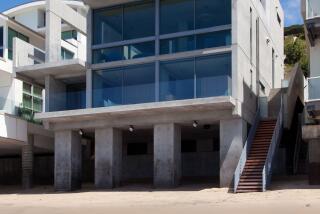Vent Opens Window on Science of the Deep
Scientists from the Scripps Institution of Oceanography have for the first time found a hydrothermal vent, a source of mineral-rich hot water on the ocean floor, in the western Pacific Ocean.
The newly discovered vent reproduces on a small scale many of the characteristics of the entire Pacific basin and thus may provide insight about geologic processes in that area. Such vents have potential economic importance as sources of metals such as iron, zinc, barium, and copper.
And marine biologists at the University of California, Santa Barbara, who have made the first study of the chemistry that occurs around such vents, have found that the exotic flora and fauna that live around the vents exist on “chemical energy from the center of the earth rather than light energy from outer space,” said Kenneth S. Johnson of UCSB.
Submarine vents were first found in 1977 along a massive undersea mountain range called the East Pacific Rise near the Galapagos Islands. Other vents have subsequently been found in the Gulf of Mexico and the North Pacific.
Scientists had predicted that similar vents would be found in the western Pacific, but none had actually been observed.
The new vent was found by James W. Hawkins of Scripps in an area known as the Lau Basin between the Tonga and Fiji islands, north of New Zealand. The Lau Basin, Hawkins said in a telephone interview from the University of California, San Diego, is an active spreading area where new sea floor is being formed by volcanic processes.
This process is slowly pushing the islands east and west of the basin farther apart.
During the process, ocean water circulates through the cracks created by the spreading, and is heated and enriched with metals and sulfur compounds. When the heated water is cooled by mixing with ocean water, the metals are precipitated from solution.
“Many ore deposits on land were formed by this type of process,” Hawkins said, and substantial quantities of ores accumulate around the vents.
Hawkins’ work marks the first time that a vent has been discovered in what is known as a “back-arc” basin, an area where the sea floor dips beneath a group of volcanic islands. The newly discovered vent provides “a link between totally different parts of the ocean,” Hawkins said, and thus may provide new information about the processes by which the Pacific basin was formed.
When the vents were first discovered, scientists were astounded to find that the area around them was densely populated with strange and colorful organisms. Their surprise arose from the fact that all previously known organisms rely either directly or indirectly on sunlight for energy.
The organisms around the vents, in contrast, live in complete darkness. Scientists speculated that they drew energy directly from chemicals, particularly sulfur compounds called sulfides, released by the vents.
Organisms captured on the bottom and grown in the laboratory could, in fact, obtain energy from such chemicals, but no one could be sure that this was the important process actually occurring on the ocean floor.
Johnson and his colleagues at UCSB “built a machine that would do chemical analyses underwater,” he said. They attached this analyzer to the exterior of the submersible Alvin and mapped the concentrations of sulfides and other chemicals around a vent near the Galapagos.
They reported in the most recent issue of the journal Science that microorganisms around the vents remove sulfide and oxygen from the water in a fashion characteristic of biological processes--strong proof that the undersea life is using the chemicals as an energy source.
They also found that the microorganisms consuming the chemicals are not free-floating, like most ocean species, but are symbiotically attached to the larger inhabitants.
The most surprising aspect of the study, Johnson said, is that the microorganisms are “so incredibly efficient that they can take almost all of the chemicals out of the water in the very brief period during which it is passing them.
More to Read
Sign up for Essential California
The most important California stories and recommendations in your inbox every morning.
You may occasionally receive promotional content from the Los Angeles Times.










